Introduction to the Brain Systems of Love
A lot of people think that sex drive, romantic love, and feelings of attachment are phases. They’re not phases, they’re brain systems. Sex is far more a brain process than a genital process. it’s the accelerator or the gas pedal, and it notices all of the sex-related information in the environment.
You can’t have sex without a brain. We still are basically adapted to the lives of our hunter-gatherer ancestors. We now have very different material conditions in all sorts of ways. We have the pill, we have ways of treating sexually transmitted diseases, we have technologies like the internet, and therefore, why should we be beholden to the mating structures of the past?

I think there’s biology involved. Sex drive, romantic love, and feelings of attachment: If you want to maintain a long-term, happy partnership, you wanna sustain all three of these brain systems.

Key Features of Brain Systems Related to Love and Attachment
| Feature | Description |
|---|---|
| Sex Drive | Operates as an “accelerator” or “gas pedal,” focusing on sex-related information in the environment, heavily influenced by biological processes. |
| Romantic Love | A brain system that focuses mating energy on one individual at a time, contributing to pair bonding and monogamous tendencies. |
| Attachment | Develops to allow individuals to stay together long enough to raise offspring, highlighting its evolutionary advantage in human development. |
Helen Fisher’s Personal Journey and Studies
I’m Helen Fisher. I’m an anthropologist, and I actually know where love is in the brain. When I got to graduate school, they thought that the mind was an empty slate – ‘a tabula rasa.’ An environment just filled up the brain with who you were.
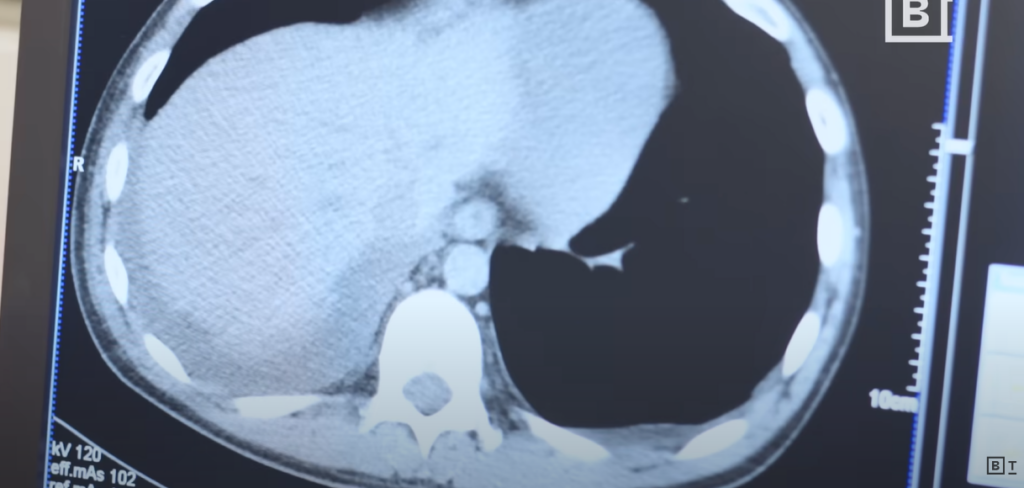
And as I sit there and listen to these various academics, I thought: “That’s not true.” I thought to myself: “If there’s any part of human behavior that has a biological origin, it must be our patterns of love and marriage. Because, As Darwin would have said, “If you have children and I have none, you live on and I die out”. The game of love matters.

The Importance of Love in Human Behavior
I really had a wonderful childhood. I grew up in a modern house—a glass house—and it was thrilling. We had a lot of land. We could see the deer and the foxes and the possums all around the house all the time. I have an identical twin sister, so I always had somebody to play with.
My father and mother really believed that sex was an important part of a partnership. On Saturday afternoon, we were instructed to never walk around that side of the house ’cause it was a glass house, and you could see in.
We were never allowed to knock on their bedroom door if it was shut. So I knew from a small child that, when I grew up, there were certain things in a partnership that really should work properly, and one was you should find your partner sexually attractive.
The Biological Basis of Love
When I first began to study romantic love, I wrote my very first academic paper. It was on these three different brain systems that I think evolved for mating and reproduction: sex drive being one, feelings of intense romantic love being the second, and feelings of deep attachment being the third.
And I was maintaining in that article that these all evolved for various reasons. Sex drive evolved to get you out there looking for a whole range of partners. Romantic love evolved to enable you to focus your mating energy on just one at a time.
And attachment evolved to enable you to stick with this person, at least long enough to raise a single child through infancy.
Overcoming Skepticism
The peer reviews came back, and at least one of the peer reviewers wrote back and said, “You can’t study this; it’s part of the supernatural.” And I looked at that, and I thought to myself, “Does this person think that anger’s part of the supernatural? That fear is part of the supernatural? That disgust or joy is part of the supernatural?” Why would they think that romantic love, a basic brain system, would be part of the supernatural? I mean, all over the world, people everywhere fall in love. They pine for love, they live for love, they kill for love, and they die for love—it’s a powerful brain system.
The Science of Love and Its Implications
Brain Imaging and Discoveries in Romantic Love
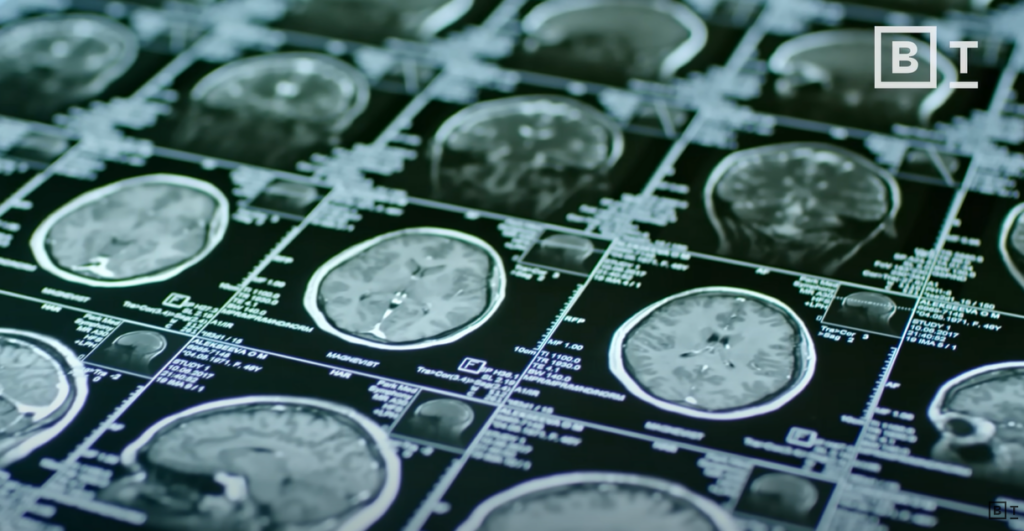
I thought maybe if I could put people into a brain scanner, I could find the basic brain pathways, the basic brain circuitry, of these three basic brain systems. So I assembled a team, and began to put people in the scanner. They would look at a picture of their sweetheart that called forth the wonderful feelings of romantic love, and they would also look at a photograph of somebody who called forth no emotions; no positive or negative emotions.
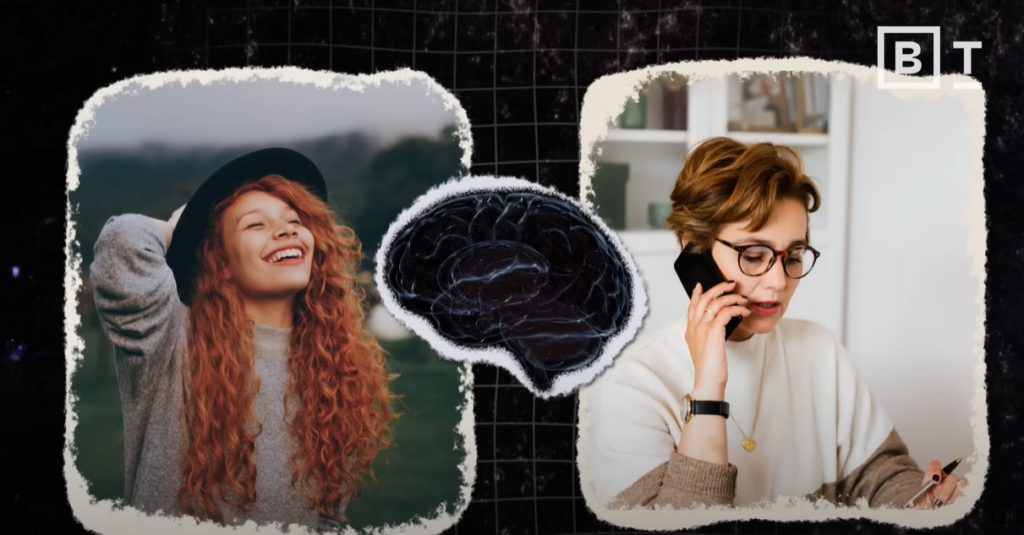
When you put the neutral and the romantic love on top of each other and cancel out what they have in common, you’re left with what’s going on in the brain when you’re madly in love.
I’ll never forget the first moment that I looked at our data. What we saw was activity in a tiny little factory near the base of the brain called the ‘ventral tegmental area.’ It’s a brain region that actually makes dopamine, a natural stimulant, and gives you that focus, that motivation, the craving, the elation of intense romantic love.

The Role of Love in Human Behavior and Addiction
After we discovered this data, a lot of people came and wanted to talk to me, and I thought to myself at the time, “You know, Helen, this really isn’t very important. You know, when you’re madly in love with the right person, there’s no problem. The real problem is when you’ve been rejected in love. That’s where I can make a contribution to humanity.”
Sure enough, I was able to put 15 men and women into the scanner who had just been dumped. I was able to find activity in a lot of brain regions.
One brain region is that same basic ventral tegmental area, the VTA, that pumps out the dopamine that gives the feeling of intense romantic love. You don’t stop loving somebody when they’ve dumped you.
I found activity in a brain region linked with pain. This is a brain region that also becomes active when you have a toothache. But most important, I found activity in three brain regions linked with craving and addiction: Specifically, is activity in a brain region called the ‘nucleus accumbens.’ It’s the basic brain region that becomes active when you are addicted to cocaine, heroin, alcohol, cigarettes, gambling. And so, I was able to prove that romantic love, when you are rejected, is an addiction.
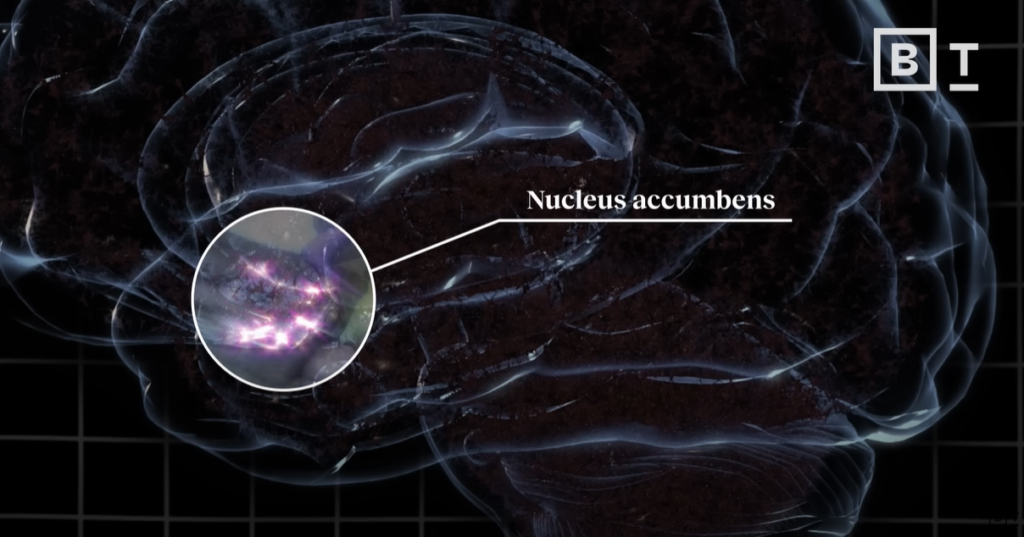
Implications for Long-Term Love and Relationship Stability
I hope the world understands that this intense feeling of romantic love came out of nature. Everybody feels it, and we have to respect the intense feelings of people when they have been rejected in love, when they’re happily in love, and when they’re in love long-term.
My colleagues and I have put who were in love long-term. These were people all in their fifties and sixties who were happily married, in love an average of 21 years, and sure enough, we found activity in these same brain regions.
The ventral tegmental area pumps out the dopamine, gives you feelings of intense romantic love. A brain region in the hypothalamus linked with the sex drive, and brain regions linked with calm and security. So in long-term love, you can remain in love, but you got to pick the right person.
Key Ideas Summary
| Key Idea | Description |
|---|---|
| Brain Imaging in Love | Use of brain scanners to identify pathways and areas active during states of romantic love. |
| Ventral Tegmental Area | Central to producing dopamine; associated with the motivation and elation of intense romantic love. |
| Impact of Rejection | Similar brain areas activated in rejection as in addiction, proving romantic love’s addictive qualities. |
| Long-Term Love | Continuous activity in specific brain regions in long-term relationships, supporting sustained romantic love. |
| Choosing Partners | Importance of choosing the right partner for maintaining long-term, intense romantic love. |
Sustaining Long-Term Relationships
Key Strategies for Maintaining Love and Connection
Sex drive, romantic love, and feelings of attachment: If you want to maintain a long-term, happy partnership, you wanna sustain all three of these brain systems. You wanna have sex regularly. That drives up the testosterone system, so you want more sex. Sex is very good for you, if you like the person you’re having sex with.
If you wanna sustain feelings of intense romantic love, novelty, novelty, novelty! And you don’t have to swing from chandeliers; just ride your bicycles going out to dinner. Walk in a different part of town. Go on a summer vacation to someplace else. And if you want to sustain feelings of deep attachment, stay in touch. Any kind of holding hands, kissing, walking arm in arm, sitting next to each other to watch television instead of separate armchairs. Any kind of continued pleasant touch drives up the oxytocin system.
So, I think what I’m working towards here is understanding these brain circuits enough so that we can use the data to find the right person, that’s number one, understand who they are, that’s number two, and sustain a long-term happy partnership. Romantic love will be with us forever. It’s primordial, it’s adaptable, and it’s eternal. It will survive as long as we survive as a species.
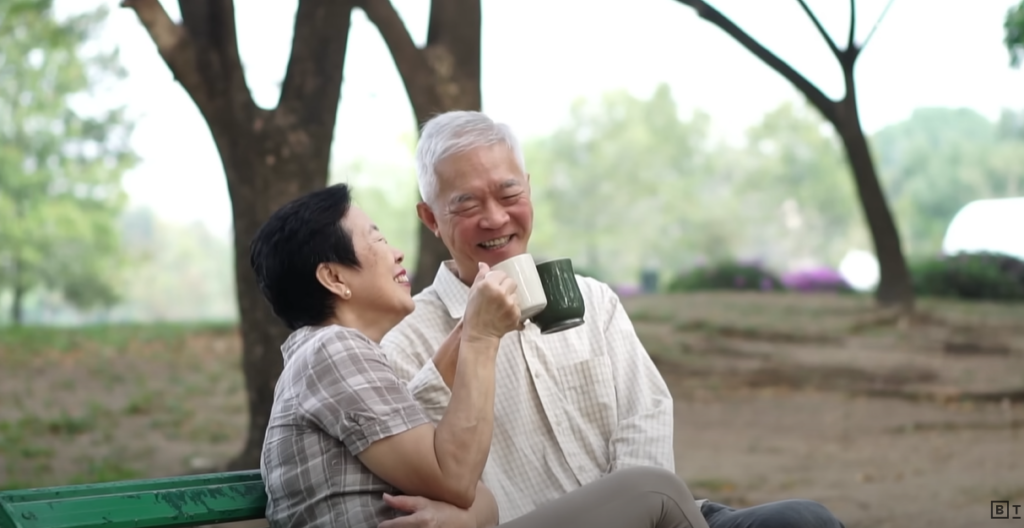
Science-Backed Statistics on Long-Term Relationships
- Testosterone and Sexual Frequency: Studies show that regular sexual activity can increase testosterone levels, which in turn boosts libido and overall sexual health.
- Oxytocin and Physical Touch: Research indicates that physical touch not only increases oxytocin but also reduces cortisol levels, leading to lower stress and better emotional bonding.
- Novelty and Romantic Love: Psychological studies affirm that introducing new and exciting experiences into a relationship can significantly enhance romantic love, preventing relationship stagnation.
Challenges in Contemporary Sexual Relationships : Louise Perry
Emerging Trends in Modern Sexuality
I’m Louise Perry. I’m a journalist and author, and my book is called “The Case Against the Sexual Revolution: A New Guide to Sex in the 21st Century.”

It seems quite plausible that polyamory is going to be the next sexual minority rights movement. Currently, of course, marriage is defined in strictly monogamous terms, and there are some polyamorous who said that this is unjust, and that their relationships should be legally acknowledged in the same way that monogamous people’s relationships are acknowledged.
But, I think that there is a risk of rejecting the monogamous model. Proponents of polyamory would say that in our species history, the most common mating model has been the polygynous model: So when you have one male having multiple female partners—that’s about 80% of cultures on the anthropological record have been polygynous.
Technological Influence and Biological Constraints
The monogamous model is the unusual one. We now have very different material conditions in all sorts of ways. We have the pill, we have ways of treating sexually transmitted diseases, we have technologies like the internet, and therefore, why should we be beholden to the mating structures of the past?

This is a brave new world with all sorts of new possibilities. I think the problem with that defense of polyamory is that it overestimates the extent to which we are really capable of controlling our Stone Age brains.
Our brains have not kept pace with the technological change that we’ve seen. We still are basically adapted to the lives of our hunter-gatherer ancestors. That puts a fairly hard limit on the extent to which we can completely design utopia on the back of an envelope.
Societal Implications and Stability in Monogamy
People are free to experiment with all sorts of mating patterns, including polyamory. For some individuals, that’s good. In terms of the whole society, though, women and children in particular, the monogamous system is much preferable, for all of its flaws.

Monogamy makes societies more stable, more peaceful, more prosperous. You can compare this quite directly by looking at certain countries which have both monogamous and polygynous systems operating in tandem, and you can see that there are these differences.
Households with multiple wives are much more prone to conflict. Stepchildren, in particular, are much more vulnerable to abuse by their stepparents. It’s a phenomenon that evolutionary biologists call the “Cinderella effect,” described by Stephen Pinker as the single greatest risk factor in child abuse ever identified.
Scientific Observations and Statistical Insights
- Cultural Norms and Polygamy: Anthropological records suggest that about 80% of historical societies practiced polygyny.
- Monogamy and Social Stability: Comparative studies show that monogamous societies tend to be more peaceful and economically stable than polygynous ones.
- The Cinderella Effect: This effect highlights how stepchildren in households with multiple partners are statistically more likely to experience abuse, supporting the case for monogamous family structures as safer environments for child-rearing.
Sexuality and Desire: Debunking Myths
I’m Emily Nagoski. I’m a sex educator, and I’m the author of “Come as You Are: The Surprising New Science that Will Transform Your Sex Life.” And like, it actually does. Virtually everything we are taught about sexuality for the first two decades of our lives is wrong.
A lot of us were raised in what I started calling the “desire imperative,” that you have an obligation to experience spontaneous, sparky desire for your partner, and to sustain spontaneous, sparky desire for your partner all the time. And so there’s a lot of advice about, “How to keep the spark alive.” And what I wanna say is screw the spark.
Understanding Spontaneous vs. Responsive Desire

So, how most of us think about sexual desire is as a ‘spontaneous desire’ where you’re just like walking down the street, you have a stray sexy thought. You see a stray sexy person – kaboom! You just, you just want the sex! And that absolutely is one of the normal healthy ways to experience sexual desire, spontaneous desire.
It emerges in anticipation of pleasure, but there’s also ‘responsive desire,’ where instead of it just appearing like a lightning bolt, it emerges in response to pleasure. Just that information alone can resolve people’s sexual desire problems because they realize they don’t have a desire problem, they just have responsive desire. So it’s not about figuring out where the pleasure is, it’s finding a pathway to the pleasure.
Evolution of Sex Therapy Models
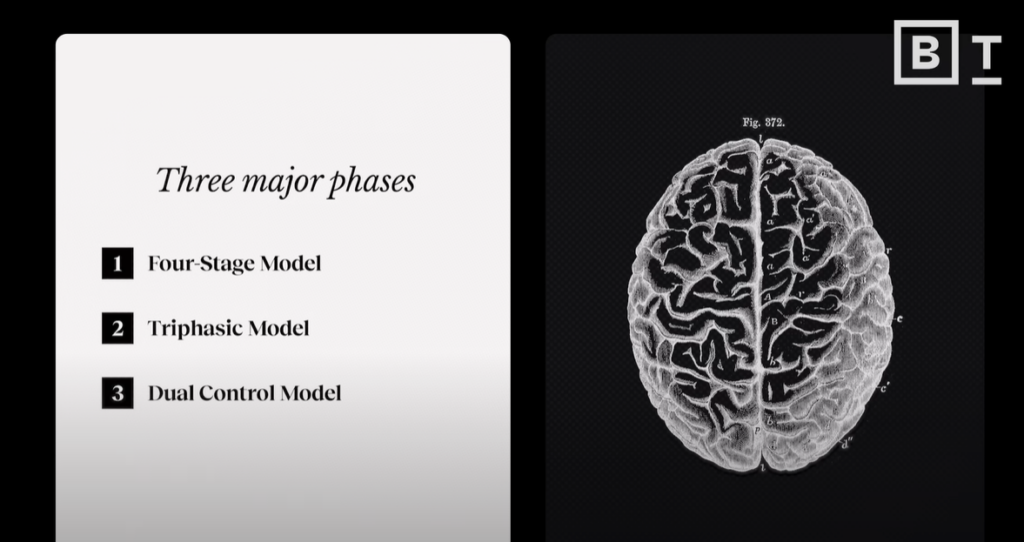
So, the history of the science of sex therapy really has three major phases: The first is grounded in the work of Masters and Johnson, whose fundamental Four-Phase Model of Sexual Response was what sex therapy was based on.
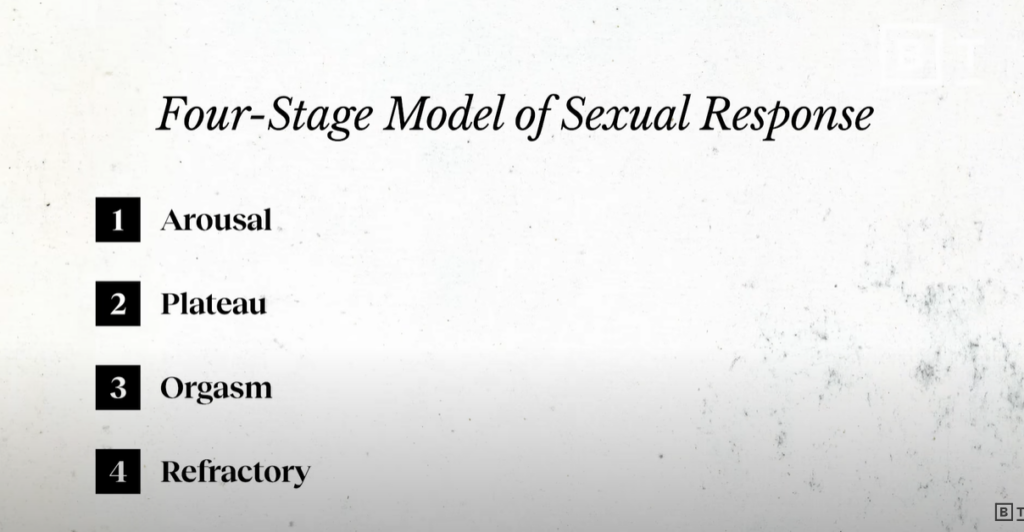
But when you listen to those phases, you’ve got arousal, plateau, orgasm, refractory period – you know what’s missing in that? Desire.
The Dual Control Model Explained
When Helen Singer Kaplan came along in the 1970s, she noticed that desire was nowhere in the model they were using to treat sexuality. So she created the Desire, Arousal, Orgasm Model, the Triphasic Model, and it was revolutionary to add desire, so now we can develop interventions targeting specifically when and how much people want sex.
And then: Eric Janssen and John Bancroft at the Kinsey Institute had the wacky idea that sex works in the brain just like all the other things in our brain, which is that it is a pairing, and it’s called the Dual Control Model because it’s got two primary parts: there’s the sexual excitation system or accelerator, and there’s the sexual inhibitory system or brakes.
Sex is far more a brain process than a genital process. Genitals can be fun; the brain is essential. You can’t have sex without a brain. So the sexual excitation system is, colloquially, it’s the accelerator or the gas pedal, and it notices all of the sex-related information in the environment. That’s everything that you see; everything that you hear, smell, touch, taste, and crucially, all the sensations in your body, and everything that you think, believe, or imagine.
What are some common things that activate people’s accelerators? The sight of their partner, the smell of their partner, reading a sexy book or watching a sexy scene. And it sends the ‘turn on signal’ that many of us are familiar with. Functions unconsciously at a low level all the time.
The Role of Context in Sexual Pleasure
There’s just a little bit of sex-related stimuli, but fortunately at the same time, your brakes, the inhibitory impulses, are noticing all the good reasons not to be turned on right now. And it turns out when people are struggling with any aspect of sexual response – pleasure, desire, arousal, orgasm – it’s not usually because there’s inadequate stimulation to the accelerator, it’s because there is too much stimulation to the brakes.
And a lot of them have nothing to do with the sex itself, but have to do with stress, body image, trauma, and relationship issues. So the process of becoming aroused is a dual process of turning on the ons, and turning off the offs.
The Dual Control Model sort of makes it sound like, “touch me here, don’t touch me that way.” It could be as simple as that, but that’s not how pleasure works. The perception of a sensation in our bodies as pleasurable or not depends on the context in which we experience it – and the context means the external circumstances and our internal state.
External circumstances: the bedroom door is locked, we know we’re not gonna be interrupted. We’re wearing the sexy underwear that makes us feel sexy. The internal state is whether you are stressed, depressed, anxious, lonely, experiencing repressed rage – we’ve all got it. So there can be certain kinds of stimulation that in one context feel amazing, and in other context make you wanna punch somebody in the face.
Conclusion on Sexuality Myths
My usual example is tickling. If you are already in a fun, flirty, playful, aroused, trusting, loving, frame of mind, and your certain someone tickles you, it’s not everyone’s favorite, but you can imagine a world where that feels playful and good and can even lead to other things.
But if you’re in the middle of a fight and they tickle you, it is going to be very irritating. “What? It’s the same sensation.” It’s the same certain special someone, but the emotional context, by which I mean the actual activation in your brain, is different.
And so your brain interprets the sensation as exactly the opposite. Couples who sustain a strong sexual connection over the long term are not couples who constantly can’t wait to like put their tongues in each other’s mouths – they’re the couples who know how to co-create a context that allows both of their brains to have access to pleasure.
The most common reaction people have when they learn about the Dual Control Model, especially in conjunction with responsive desire is, “Why did no one tell me this before?” It’s a kind of freedom to know that you’re already normal, you are not broken, nothing is wrong; you just need to work to create a context that allows your particular brain to be ready to respond.
Scientific Insights and Statistical Information
- Responsive vs. Spontaneous Desire: Research supports that while spontaneous desire is common, responsive desire is equally normal and often misunderstood.
- Effectiveness of Sex Therapy: Studies indicate a significant success rate in treating sexual dysfunction when therapies consider both the dual control model and the responsive desire framework.
- Cultural Influence on Sexual Norms: Statistical analysis reveals varied cultural norms around sexuality significantly impact individual sexual health and relationship satisfaction.
Navigating Sexual Self-Discovery and Communication
Developing Self-Awareness in Sexuality
The mindset to bring to the process of coming to understand who you are as a sexual person and how you came to be this person, is to turn toward your own internal experience with kindness and compassion. If you want to understand yourself, there are worksheets that you can do. There are lots of other books that you can read. Talk to a therapist.
Engaging in Open Communication with Your Partner
Unfortunately, if you want to explore these ideas with a partner, you are going to have to talk to your partner about sex. And there are a lot of people who feel like having sex with their partner is a whole lot easier than talking about sex with that same partner. So, really what it comes down to is tips for how to talk to your partner about sex.
Creating a Positive Dialogue About Needs
And one of the positive frames that you can use is that: ‘You and I belong together in a sexual way, and I am interested in exploring the ways that we can deepen our erotic connection. I want to know what works for you. I want to be able to tell you what works for me in a way that’s going to feel good to you and not critical.’
Emphasizing Emotional Connection Over Physical Acts
It’s not about spark. What I want is smoldering embers for anyone in a long-term relationship so that it is banked and ready to stoke. And partners have a shared vocabulary for understanding how to stoke the fire to bring it to life for the times when you are ready.
Prioritizing Pleasure in Sexual Relationships
If I could have people remember only one thing it would be: ‘Pleasure is the measure.’ It is not how often you have sex or who you have it with or where you do it, or in what positions, or even how many orgasms you have – it’s just whether or not you like the sex you are having.
And if everybody involved is glad to be there, free to leave with no unwanted consequences, and likes the sex they’re having, you’re already doing it right. And all of the other pieces, all the other things that you could be worried about like desire and orgasm, those things will fall into place when you put pleasure at the center of your definition of sexual well-being.


Fascinating insight into the biological basis of love and relationships. Love really is a powerful brain system.
This article provides a fascinating insight into the biological basis of love and relationships. It’s interesting to see how our brain systems play a crucial role in shaping our behaviors and emotions related to love.
This article provides fascinating insight into the brain pathways involved in romantic love and the implications for long-term relationships. It’s interesting to see how rejection in love can lead to addictive qualities in the brain.
This article provides a refreshing perspective on sexual desire and pleasure, highlighting the importance of understanding responsive desire and the role of the brain in sexual arousal. It’s time to rethink the traditional views on sexuality and embrace a new approach to sexual satisfaction.
This article provides a fascinating insight into the biological basis of love and how it influences human behavior. Love is more than just a feeling, it’s a brain system that has evolved for specific reasons.
Interesting perspective on the importance of novelty and physical touch in maintaining romantic love and deep attachment in relationships. The discussion on polyamory and monogamy raises thought-provoking points about societal implications and stability.